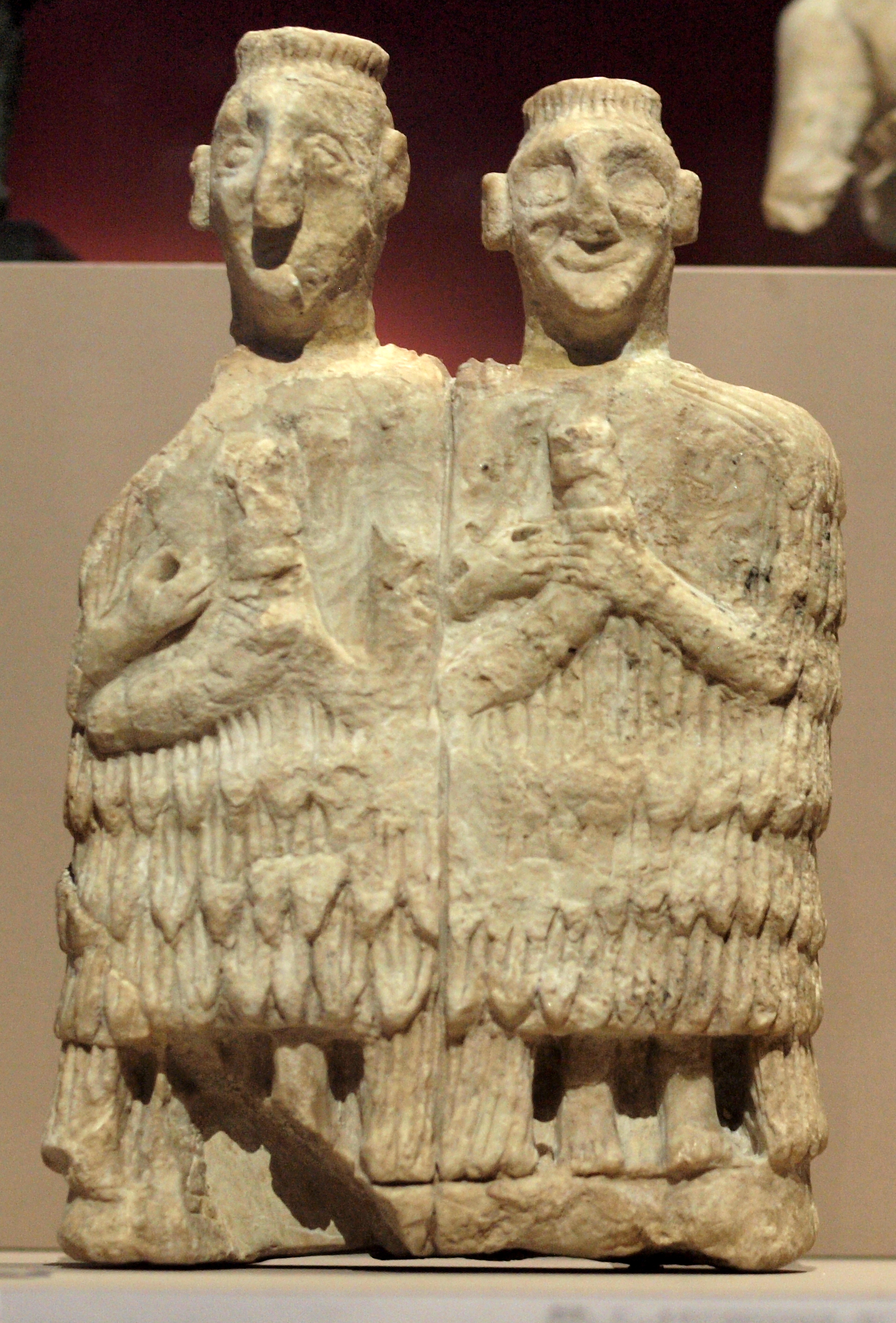Gala (priests) on:
[Wikipedia]
[Google]
[Amazon]
 The Gala ( Sumerian: ''gala'',
The Gala ( Sumerian: ''gala'',
 The Gala ( Sumerian: ''gala'',
The Gala ( Sumerian: ''gala'', Akkadian Akkadian or Accadian may refer to:
* Akkadians, inhabitants of the Akkadian Empire
* Akkadian language, an extinct Eastern Semitic language
* Akkadian literature, literature in this language
* Akkadian cuneiform
Cuneiform is a logo-syllabic ...
: ''kalû'') were priest
A priest is a religious leader authorized to perform the sacred rituals of a religion, especially as a mediatory agent between humans and one or more deities. They also have the authority or power to administer religious rites; in partic ...
s of the Sumerian goddess
Sumerian religion was the religion practiced by the people of Sumer, the first literate civilization of ancient Mesopotamia. The Sumerians regarded their divinities as responsible for all matters pertaining to the natural and social orders.
O ...
Inanna
Inanna, also sux, 𒀭𒊩𒌆𒀭𒈾, nin-an-na, label=none is an ancient Mesopotamian goddess of love, war, and fertility. She is also associated with beauty, sex, divine justice, and political power. She was originally worshiped in Su ...
. They made up a significant number of the personnel of both temples and palaces, the central institutions of Mesopotamia
Mesopotamia ''Mesopotamíā''; ar, بِلَاد ٱلرَّافِدَيْن or ; syc, ܐܪܡ ܢܗܪ̈ܝܢ, or , ) is a historical region of Western Asia situated within the Tigris–Euphrates river system, in the northern part of the ...
n city states.
Originally specialists in singing lament
A lament or lamentation is a passionate expression of grief, often in music, poetry, or song form. The grief is most often born of regret, or mourning. Laments can also be expressed in a verbal manner in which participants lament about somet ...
ations, gala appear in temple records dating back from the middle of the 3rd millennium BC. According to an old Babylonian text, Enki
, image = Enki(Ea).jpg
, caption = Detail of Enki from the Adda Seal, an ancient Akkadian cylinder seal dating to circa 2300 BC
, deity_of = God of creation, intelligence, crafts, water, seawater, lakewater, fertility, semen, magic, mischief
...
created the gala specifically to sing "heart-soothing laments" for the goddess Inanna. Cuneiform references indicate the gendered character of the role. Lamentation and wailing may have originally been female professions, so that the men who entered the role adopted its forms. Their hymns were sung in a Sumerian dialect known as ''eme-sal
Sumerian is the language of ancient Sumer. It is one of the oldest attested languages, dating back to at least 3000 BC. It is accepted to be a local language isolate and to have been spoken in ancient Mesopotamia, in the area that is modern-d ...
'', normally used to render the speech of female gods, and some gala took female names.
Homosexual proclivities are implied by the Sumerian proverb which reads, "When the gala wiped off his anus e said ‘I must not arouse that which belongs to my mistress .e., Inanna��". In fact, the word ''gala'' was written using the sign sequence UŠ.KU, the first sign having also the reading giš3 ("penis"), and the second one dur2 ("anus"), meaning that might be a pun involved. Moreover, gala is homophonous with gal4-la "vulva".
In spite of all their references of their effeminate character (especially in the Sumerian proverbs), many administrative texts mention gala priests who had children, wives, and large families. In addition, some gala priests were women.al-Rawi 1992
See also
* Enaree *Galli
A ''gallus'' (pl. ''galli'') was a eunuch priest of the Phrygian goddess Cybele (Magna Mater in Rome) and her consort Attis, whose worship was incorporated into the state religious practices of ancient Rome.
Origins
Cybele's cult may have ...
Notes
References
* Al-Rawi, F. N. H. 1992. "Two Old Akkadian Letters Concerning the Offices of kala'um and närum." In ''Zeitschrift für Assyriologie'' 82. * Bottéro, Jean, and H. Petschow. 1975. "Homosexualität." In ''Reallexikon der Assyriologie und Vorderasiatischen Archäologie'' 4:459b–468b. * Cohen, Mark. 1974. ''Balag-Compositions: Sumerian lamentation liturgies of the second and first millennium B.C.'' ''Sources from the Ancient Neat East'', volume 1, fasc. 2. * * Gelb, I. J. 1975. "Hono ludens in early Mesopotamia." In ''Haec studia orientalia professort Assyriologia, et filologiae Semiticae in Universitate Helsingensi Armas I. Salonen, S.Q.A.: Anno 1975 sexagenario'', 43-76. Studia Orientalia 46. * Gordon, Edmund. 1959. ''Sumerian proverbs: Glimpses of everyday life in ancient Mesopotamia.'' * Hartmann, Henrike. 1960. ''Die Musik der Sumerischen Kultur''. * Henshaw, Richard A. 1994. ''Male and female, the cultic personnel: The Bible and the rest of the ancient Near East''. Princeton Theological Monograph Series 31. * Kramer, Samuel N. 1981. ''History begins at Sumer: Thirty-nine firsts in man's recorded history.'' Rev. ed. * Krecher, Joachim. 1966. ''Sumerische Kultlyrik''. * Lambert, Wilfried G. 1992. "Prostitution." ''Xenia'' 32:127-57. * Michalowski, Piotr et al. (eds.). 2006. ''Approaches to Sumerian Literature: Studies in Honor of Stip (H. L. J. Vanstiphout).'' * * Renger, Johannes. 1969. "Untersuchungen zum Priestertum der altbabylonischen Zeit, 2. Teil." ''Zeitschrift zur Assyriologie'' 59 (n.f. 25). * Steinkeller, Piotr. 1992. ''Third-millennium legal and administrative texts in the Iraq Museum, Baghdad.'' * {{cite book, author=Ann Suter, date=2008, title=Lament: Studies in the Ancient Mediterranean and Beyond, publisher=Oxford University Press, isbn=978-0199714278 3rd-millennium BC establishments Mesopotamian priests Religious occupations Third gender Transgender topics and religion Ancient LGBT history LGBT themes in mythology Inanna